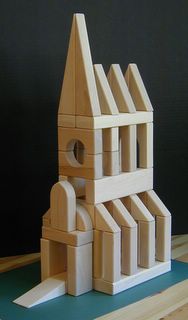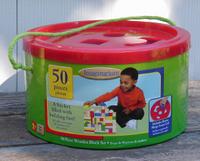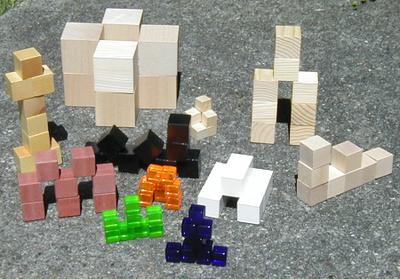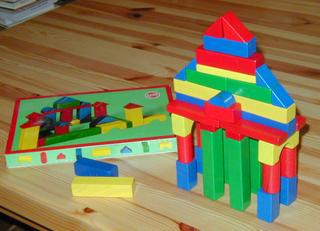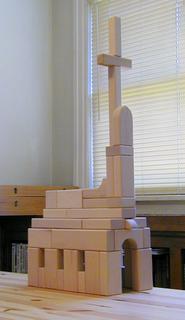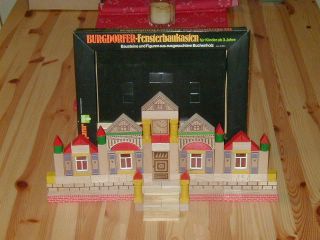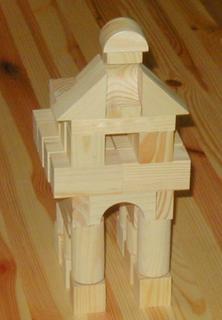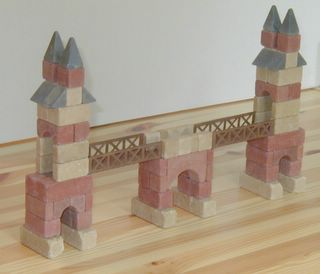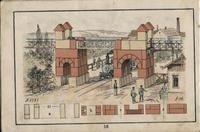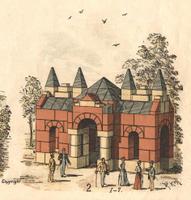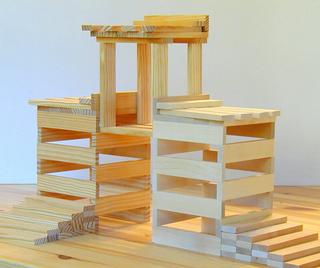
The left-hand and center parts are Kapla, the right-hand part is Mula.
I found out about Mula Sticks just after Ikea dropped the product, so missed out on the cheap pricing -I believe it was $6.99 for 150 sticks versus Kapla's ~$65 for 200 sticks and a booklet of designs.

Kapla are better, but that much better?
The Mula are exactly the same thickness as Kapla, roughly the same width, but less consistent. The length is unfortunately a couple of millimeters shorter, which not only doesn't match Kapla, but is shorter than 5 Mula sticks side by side.
Consistency of longer dimensions being exact multiples of shorter dimensions is a vital part of and block construction set having maximum versatility.
Kapla are a very nice pine, with gorgeous grain patterns. Mula seem very much like Basswood, with barely visible grain in most pieces.
Kapla is probably worth paying double what it costs to get Mula now, especially if you don't have the booklet. I think maybe I am glad that Mula isn't still available at the local Ikea store - paying 7 times more per stick for Kapla would not be easy.
The design is from the Kapla "Green Book." I liked the bridge aspect.

[Recommended:
L'art Kapla
by Tom Van Der Bruggen]



